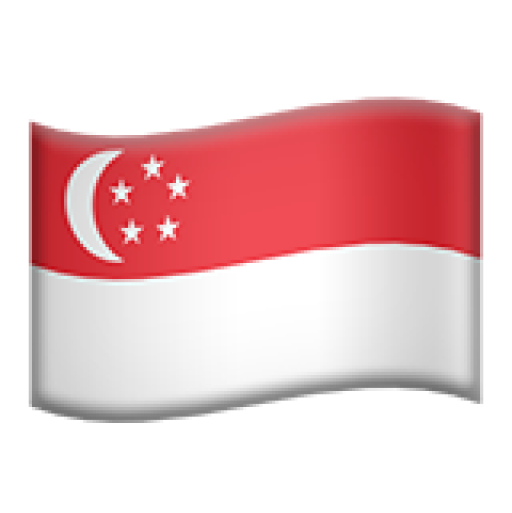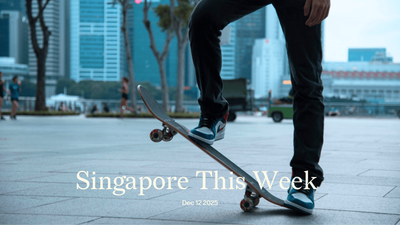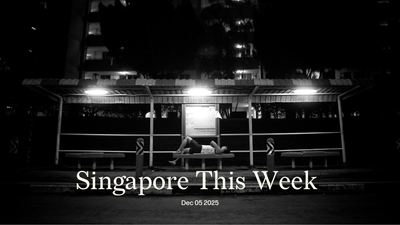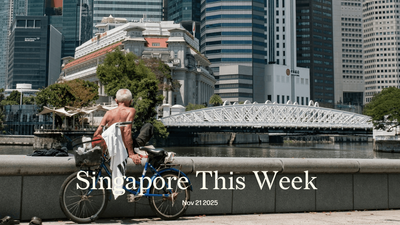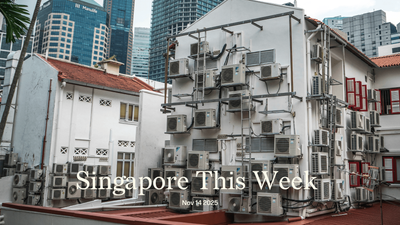Arts: Berlin celebrates Charmaine Poh
Next to the State Opera House in the heart of Berlin, Germany’s capital, is Prinzessinnenpalais, an 18th-Century neoclassical building built for Prussian royalty. In 2018, Deutsche Bank converted it into PalaisPopulaire, a cultural hub that also houses its art collection. On Wednesday evening, amid the Berlin Art Week, it was thronging with well-heeled, besuited Germans, who moved between cocktail tables cradling pretzel sticks, yellow and red sunflowers, and chalices of bubbly. In one corner, looking slightly out of place in more dazzling dress, was a group of South-east Asians. All were there to celebrate the opening of the first solo exhibition by Charmaine Poh, the bank’s artist of the year.
In the circular space at the foot of a stunning spiral staircase is the first work. A projection from above illuminates the floor with blue waves, gently washing over a white poem (from Madeleine Thien, who was quoting Lao Tzu and William Stafford).
heavy is the root of light
as the old philosophers say
how we stand here is important
how we breathe
It’s a fitting welcome to Charmaine’s world. Water, standing “for life, for a soft but persistent energy”, is the element that accompanies many of her narratives, which explore themes around agency, identity, femininity, and queerness. The fluidity of water and interpretability of words prods us to seek meaning behind the obvious. And from a Taoist line emerges another motif: of inner power, peace, and liberation.
The palace’s entire second floor, accessed by brushing your way through a phantasmagorical, psychedelic curtain, is filled with works that exemplify her multimedia, multigenre talent. Some have been seen in Singapore, like photographs of the “Majie”, Cantonese migrant domestic workers who’d taken a vow not to marry; and her deepfake video avatar, E-Ching, which leverages footage from her child-acting career to subvert the online violence she faced, in the process interrogating the male gaze and notions around our different selves, while hinting at pathways to restitution, for all struggling to cope with the absurdities and abuse of the online life. By contrast, a documentary on queer parents in Singapore, commissioned for last year’s Venice Biennale, is now on public display in Berlin but, outrageously, can be screened only to those 21 and up in the very place it was filmed.
Charmaine’s primary new work is “The Moon is Wet”, a film that weaves together three narratives, each by a different protagonist in a different language: the sea goddess Mazu, a Majie, and Monic, an Indonesian domestic worker. Moving from downtown Singapore to the beach and mangrove forests, in varied, stunning cinematography, it combines numerous currents of the Singapore story, from migration to reclamation, with water, tides and the planet’s broader circadian rhythms toying with one’s conception of time, of spiritual ancestry and descent. The video is a three-channel installation; the viewer stands in a circular room, surrounded by three big screens, and can only reasonably see one of three perspectives, for each successive chapter. From grand ecological decay to individual human pain on an eight-day migration to Singapore, we’re left wondering which angle we’ve missed. But the moments of joy—Mazu catching a whiff of “this southern sea’s briny air”, creatures crawling in the intertidal, Monic falling in love with a woman and forgetting her troubles in a KTV joint—remind us of why we live.
Editor’s note: “Make a travel deep of your inside, and don’t forget me to take” is on till February 23rd 2026. When we told her we intend to write this, Charmaine was concerned about Jom being seen as promoting the work of one of our co-founders. While we appreciate her concerns about editorial conflicts of interest, they are outweighed by this publication’s need to recognise stellar achievement. We are delighted that it’s by one of us.
Arts: Hey you, wish you were here for the great gig in the sky
You adore your favourite band. They had you at the opening riff of that hit song, or that experimental B-side deep cut that only insiders know. You’ve memorised their CD liners, bought your first vinyl, savoured every live album from arenas far away both in space and time. But maybe you were born in the wrong era, and some of the band’s already dead; or they dissolved before Singapore made its way onto the concert circuit; or their reunion concert sells out before you can even figure out how to get to where they are; or the tickets are so eye-wateringly expensive you can’t imagine what the scalpers must be hauling in. What do you do? Well, if you’ve got an ear for music and a flair for the stage, you start a tribute band—with a little help from your friends.
We’re entering a tribute renaissance. When bickering brothers Liam and Noel Gallagher made up long enough to put together an Oasis world tour this year, ticket demand far outstripped concert supply. Luckless fans promptly flocked to tribute bands for a shot of nostalgic Britpop. “I’ve made a living from it for a good 20 years, but since the [reunion] announcement...the phone has just been off the hook,” a member of UK tribute band Definitely Mightbe told AFP. Singapore had its own inaugural “Tributefest” last year, with local and regional bands churning out the classics from AC/DC, Bowie and Queen. And these tribute acts take the replication of the musicality and personality of their chosen artists very seriously.
This weekend, a group of friends in their 50s to 70s have set themselves the ambitious task of recreating Pink Floyd’s concept album “The Wall”. Singapore’s only tribute band to the iconic 1970s prog-rock group—Welcome To The Machine—is pulling out all the stops for its two-night gig at Esplanade’s Singtel Waterfront Theatre. With lasers, projections, a live orchestra and choir, it’s giving fans a bit of that all-suffusing sonic psychedelia the British band was known for. This concert’s entirely self-funded, and all the band members have hung on to their day jobs, from banking executives to sales managers. The group formed in 2013 over geek-outs at a guitar store; now they perform every few months to devoted fans at both cozy pub gigs and sprawling festivals. For Noel Ong, a founding member, “The Wall” has a special place in his heart. “It was like a musical; it was like Les Miserables – it had art and a story and all kinds of different songs. It had a sense of drama. It just pulled me in,” he told CNA. And, musical gymnastics aside, they thankfully won’t have to over-exert themselves physically. “[Pink Floyd’s members] stand around and do what they do, and they let the music and the projections speak which is so good for us, because we’re at an age where we don’t want to be pretending to be Blink 182 or Backstreet Boys moving around the stage,” member Laurence Bucci said. “We’re just disciplined...and let the music talk.”
Politics: Falsified documents, improper tenders and conflicts-of-interest
Of the 132 lapses that the Auditor-General’s Office (AGO) found in its annual audit of ministries and agencies, 25 were “more significant”. PUB, the national water agency, asked the police to look into possible irregularities in quotations for a S$6.75m contract for waterscape works. Another case involved falsified documents for a S$7.95m contract to supply biocide to control midges, small insects that live near reservoirs and other water bodies. “Such actions cast doubt on the authenticity of the other documents furnished for audit, and impede the work of AGO,” the auditor said.
Tender issues included evaluation errors at the Maritime and Port Authority (MPA), one of which may have affected the tender award. At the Economic Development Board (EDB), one involved a contract for global media agency services. The tenderer quoted a retainer fee of S$9.45m, but then upped it to S$11.54m based on new remuneration data after the tender closed, a discrepancy that EDB didn’t clarify.
Conflicts of interest (COI) were highlighted at A*Star and the National Research Foundation (NRF), in the audit of some S$654.96m in grants. At A*Star, the AGO found instances where the executive directors of institutions endorsed project progress reports which they themselves had submitted as principal investigators (PIs). At NRF, some fund requisitions were endorsed by CEOs and other managers at institutions—for projects in which they themselves were the PIs. Potential conflicts have never been that bothersome for Singaporeans. Consider the roles and reporting lines within the Lee family: for instance Lee Hsien Loong was the finance minister in the 2000s for a period while Ho Ching, his wife, ran Temasek, wholly owned by the minister. Or the recent Ridout saga, in which the government refuted COI suggestions by critics. The seemingly growing attention paid to the AGO’s audit is part of an important societal shift towards more COI vigilance.
A*Star, NRF, MPA, EDB, and other organisations in the spotlight offered instantaneous responses: “acknowledged the concerns”; “taken steps to address”; “prevent future occurrences”; and, for PUB, “disciplinary actions” taken. Penance offered, absolution granted. The auditor-general ended by saying he was “pleased” with the organisations’ commitments to address these lapses. We don’t know the names of any offending actors. While critics will clamour for more, establishment fans will cite this as proof of exemplary self-correction. The system rolls on.
Society: Me vs We
“[T]he one weakness of our present society is that there is too much of the attitude of ‘Each man for himself.’ It is the attitude of ‘my responsibility ends with my wife, my children, my mother, my father, perhaps my relatives.’ That was all right in a mediaeval society or when the British were ruling and you just made what you could and looked after yourself. But it has to change when you are running your own society.” This was part of a speech Lee Kuan Yew delivered in Queenstown Community Centre in 1966.
Over the following decades, the People’s Action Party espoused certain collectivist ideas in a bid to foster national unity, and implemented some socialistic policies in the provision of public education, housing and healthcare. But it also nurtured a clinical meritocracy, in which individuals are incentivised to compete relentlessly with each other from childhood, in the belief that a natural aristocracy would rise to govern, and keep refreshing itself, as long as starting points and opportunities are kept fairly equal. (Increasingly difficult.) The pursuit of individual wealth was glorified, and redistribution demonised, leading to the creation of one of the world’s richest but most unequal societies. Among many global fans today are right-wing, uber rich Silicon Valley techies fed up with democracy’s perceived failings —and, to be sure, almost two-thirds of Singapore’s electorate.
Whatever our collectivist leanings, then, Singaporeans have grown up with individual responsibility as a tenet of life. This is why, some 60 years later, amidst new challenges like technological disruption and an uncertain global order, Lawrence Wong, prime minister, and Tharman Shanmugaratnam, president, have refashioned Lee’s mantra: we over me. “Ultimately, our nation's success will never be measured by economic growth alone,” said Shanmugaratnam, as he addressed Singapore’s 15th Parliament last week. “It must be judged by how we support the vulnerable and how we enable all every Singaporean, young and old, to contribute and to live with dignity…All of us must through our everyday deeds and actions put the collective before self. Put we before me. We will nurture a we first society at every level starting in the community.”
These are noble ideals. But this is a time when ordinary workers are struggling with the cost of living and graduates are finding it tough to get a job, even as the world’s millionaires continue to flock here. It’s hard to think of “we” when your cai png is getting smaller and the Bentleys are getting larger. Without more radically addressing inequality, “we” will remain about platitudes, and “me” will prevail for another 60 years.
Some further reading: In “Inheriting is becoming nearly as important as working”, The Economist warns about a new global “inheritocracy”, as more boomers pass on their wealth to their kids.
Society: How many Singaporeans choose to end their lives every year?
“Number of suicides in Singapore drops in 2023, lowest since 2000”, cheered a headline in The Straits Times (ST) in July 2024. Accompanying it were statements from mental health professionals lauding the collaborative work that’s been done. Sadly, they spoke too soon. This past July, the Immigration and Checkpoints Authority (ICA) revised the final figure up by almost 35 percent, to 434. This discrepancy annoyed practitioners. “When provisional numbers are reported as if they are final, headlines get picked up, shared and remembered,” Elaine Lek, co-founder of PleaseStay Movement, a non-profit organisation for youth suicide prevention, told ST. “The public forms an impression based on that initial report. By the time the actual figure is released months later, the media cycle has moved on. We lose the chance to respond with the urgency required.”
Statistical help is on the way. On World Suicide Prevention Day (September 10th), SG Mental Health Matters announced a study to estimate the true number of suicides in Singapore. It will employ the Network Scale-Up Method (NSUM), a novel statistical approach never before applied to suicides here. NSUM has been used elsewhere to estimate the size of hidden or hard-to-reach populations, such as communities at risk of HIV, who’re often missed by national approaches. SG Mental Health Matters is also behind Project Hayat (“life” in Malay), a community-led initiative that last year published a white paper calling for a comprehensive national suicide prevention strategy. “This year, we are pushing forward by finding better ways to measure the true scale of the crisis. We cannot build solutions on incomplete data,” said Anthea Ong, former NMP who leads the effort alongside Dr Rayner Tan of the NUS Saw Swee Hock School of Public Health and psychiatrist Dr Jared Ng.
Separate from this is an effort to better understand male suicides, which comprised almost 70 percent of those in 2023, and affects certain sub-groups, like Indian men, more. “Suicide is never just about an individual - it is about the social conditions that make people feel hopeless,” said Ong. “By focusing on male suicide, we aim to uncover those conditions and design prevention that truly meets men where they are.” It wasn’t long ago that conversations about suicide were taboo in our city. The tireless work of these practitioners is helping boost societal awareness of some of our most vulnerable, largely unseen individuals.
Society: Work life after cancer
Surviving cancer and returning to work can be daunting, not least because of social stigma. Misconceptions about a cancer survivor’s ability to perform often result in discrimination during hiring, unfair dismissals, or lower-paying roles. The National Cancer Centre Singapore (NCSS) and Singapore Cancer Society (SCS) are stepping up efforts to address this. NCSS’s initiative will assist cancer survivors aged 16-45 with job-hunting and the financial strain of reduced employability. SCS plans to expand its Return-to-Work initiative for patients, including creating a new framework for companies to improve inclusivity. Launched amidst the Covid-19 pandemic in 2021, it currently offers one-on-one vocational training and counselling.
For many, workplace stigma is real. Doris Lim, a breast cancer survivor, told ST that after she disclosed her medical history, a local company withdrew its job offer. No clear reason was provided, but she noted it was implied that concerns around her “health and availability” contributed. “It was definitely discouraging,” Lim said, who spent six more months securing another job.
Returning to work brings ample benefits. It restores a sense of purpose, normalcy and personal identity. About 90 percent of 120 cancer survivors interviewed in a 2025 SCS study (the full report will be released next month) felt that resuming employment was “beneficial to their recovery”. Yet, about half expressed anxiety, citing concerns about competence, workload, and feeling “useless”. Underlying this need to remain employed is perhaps the financial burden of treatment. Without subsidies, adequate insurance coverage, or sufficient savings, patients are forced to make compromises: fight the disease and risk losing everything; or forgo treatment altogether?
In the US, one study found that 13 percent of survivors left the workforce within four years of diagnosis. Another survey reported that three quarters of cancer patients and survivors missed work for care and treatment, with a third of those receiving no income for some of the time; 13 percent eventually quit or lost their jobs.
According to the Singapore Cancer Registry, one in four people may face cancer. Support groups and community networks provide crucial emotional strength, but systemic solutions matter as much. No one should have to choose between their health and their livelihood due to financial precarity. And no one recovering from an illness should be denied the right to work if they have the requisite skills and qualifications.
The programmes by NCSS and SCS are an important starting point to gainful employment, but still place the onus squarely on the cancer survivor. Businesses should do more to actively recruit or find ways to retain employees who undergo a health crisis. What a relief it would be if recovering survivors could return to a job that they loved and excelled at before cancer unleashed its toll, allowing them to heal without the stress of finding work.
Society: No time to exercise
A local study has found that one in three healthy-weight Chinese women in their 20s and 30s have low muscle mass, high body fat, and weak bones. This makes them more susceptible to musculoskeletal disorders like osteoporosis and metabolic diseases such as diabetes. These risks cannot be identified by standard body mass index (BMI) measurements alone, a reminder that a visibly lean body is not necessarily healthy. The study was part of Singapore Preconception Study of Long-Term Maternal and Child Outcomes and was based on 191 (Chinese, Malay, and Indian) women who underwent the DXA Scan, a medical test that uses low-dose X-rays to measure bone mineral density. It built upon past findings that Asians have the “thin outside-fat inside” phenotype: lower BMI but with disproportionately high body fat compared to matched white populations.
Notably, the risk of lower bone mineral density (BMD) was attributed to reduced physical activity and lower consumption of dairy products. Most of the Chinese women in the study had higher educational attainment and sedentary white-collar jobs with long working hours. This finding was consistent with a 2023 local study on young adults’ health that noted long working hours as a significant barrier to healthy diets and physical activity. It also highlighted a gendered dimension where women did more household chores than men. Mothers handled much of the childcare too, leaving little time for physical activity.
While doctors recommend that young women to do more strength training to improve their BMD, it is difficult to do so when they do not have work-life balance. Singapore has among the highest highest rates of osteoporotic hip fractures in the world (Chinese women being the majority of the cases), and they’re projected to increase from around 15,200 in 2017 to more than 24,000 in 2035.
It’s time to seriously consider work-life balance as crucial for long-term health at a population level. If long hours are unavoidable, having flexible work arrangements so workers can squeeze a lunch break workout is another alternative. It would help too, if men did more of the heavy lifting around the house so women can do the same in the gym.
History Weekly by Abhishek Mehrotra
Singapore is the product, Goh Keng Swee told members of the newly-created Tourism Promotion Board (TPB) in 1964. Sell it. To sell it in the US, home of the moneyed traveller, the board’s overseas publicity mandarins roped in the PR firm Campbell Mithun; for Australia, they got Eric White & Associates (later revealed as a front for Australian spies in Asia. But that’s for another day). From the fertile imagination of its souvenirs committee emerged the Merlion, Eastern mystique imagined not just as a “keepsake but a constant reminder of Singapore” in the Western mind.
There were also committees to look after tourist “processing”; committees to tend to tourist comfort; committees to tell Singaporeans how important tourists were to the economy; and committees to study tourist numbers. “Intelligent and lovely” girls greeted tourists at visitor desks in Paya Lebar airport. They were the predecessors of the Singapore Girl, embodiments of the “ultimate Orientalised fantasy”. To emphasise just how serious the government was about tourists having fun here, tourism was moved from the Ministry of Culture under S Rajaratnam to the Ministry of Finance under Goh. It worked. Arrivals grew tenfold inside a decade, from less than 100,000 in 1964 to over a million in 1973. Together, they spent more than half a billion dollars, nearly 20 percent of that year’s GDP. (Today it’s around 4 percent).
The Hotel Miramar was born during this boom, alongside the Apollo and King’s that took up residence around the same time on the stretch of Havelock Road facing Robertson Quay. “THE MAGIC OF THE ORIENT UNDER ONE ROOF,” promised one of Miramar’s earliest ads. “Opposite is the Singapore River and its famous Chinese ‘tongkangs’ anchored along the banks.” The first two decades were the heydays of the Havelock hotels, commodified heritage working alongside Singapore’s growing stature as a financial hub to keep the rooms occupied and the buffet lines packed. By the 1990s, the last of the tongkangs were gone, swept away by Lee Kuan Yew’s decades-old edict to cleanse Singapore’s waterways, with “commercial and economic considerations taking precedence over the area’s historical significance,” wrote the historian Stephen Dobbs in The Singapore River: A Social History, 1819-2002.
The storied quays were refashioned for high-end revelry and luxury living. Competition intensified and the global capital so lovingly wooed for decades inflated prices. Now, with tariffs, and mounting competition for talent and tourists adding to the costs of doing business here, Miramar closes its doors following a “comprehensive evaluation of the hotel’s long-term business outlook.” Sell Singapore, Goh had said. He could not have anticipated how well we would.
Abhishek Mehrotra, Sakinah Safiee, Corrie Tan, Tsen-Waye Tay, and Sudhir Vadaketh wrote this week’s issue.
If you enjoy Jom’s work, do get a paid subscription today to support independent journalism in Singapore.

